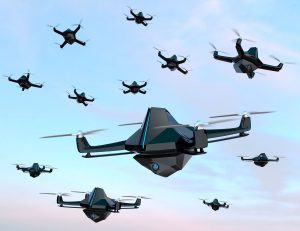By Seely Kaufmann
Last month, following a N.Y. Times investigation, the Pentagon acknowledged that a drone strike in Afghanistan mistakenly killed ten civilians, seven of whom were children.[1] U.S. Central Command (CENTCOM) military officials did not know the identity of the intended target, the driver of a white Toyota Corolla, but had deemed him suspicious because of an apparent stop at an ISIS safe house and the materials loaded in the vehicle appeared to be explosives.[2] The intended target turned out to be Mr. Zemari Ahmadi, a longtime worker for a U.S. aid group, who regularly loaded canisters of water into his trunk to bring home to his family.[3] CENTCOM Commander General Frank McKenzie, in his statement to the press, acknowledged that even though the targeting team deliberately followed and observed the intended target for eight hours, the team was unable to develop sufficient pattern-of-life activities.[4] Ultimately, the imminence of the threat and the lack of available surveillance resources lead to the mistaken identity and ten unintended deaths.[5]
While this most recent incident occurred with the U.S. MQ-9 Reapers, other countries have their own drone programs.[6] While the first phase of drone warfare was dominated by the U.S., the UK, and Israel, drones have rapidly proliferated over the past seven years to Pakistan, Turkey, U.A.E., and many others.[7] With weapon proliferation comes new warfare methodology. While drone swarms seem like something out of science fiction,[8] these systems are already being used. On September 14, 2019, a swarm of drones and cruise missiles flew past Saudi Arabia’s missile defense system and struck some of its most important oil infrastructure.[9] Saudi Arabia had attempted to protect against the rise of these cheap, low-tech threats by using the U.S. Patriot surface-to-air missiles batteries, which are designed to shoot down high-flying targets such as jets or ballistic missiles; however, drones and cruise missiles fly too low to be detected by the Patriot’s ground-based radar.[10] Luckily, there were no casualties and emergency crews had the fires under control within hours.[11]
The ethical and legal issues with drone warfare are already complicated even with a single lethal drone in the field, as illustrated by the most recent civilian casualties. Approximately one in five strikes results in civilian death, according to an investigation analyzing 150 strikes between April 2016 and June 2017 across northern Iraq.[12] Even though the United States has officially withdrawn from Afghanistan, the drone strikes continue albeit in different countries.[13] These issues surrounding drone strikes will compound if left unresolved, as drone warfare technologies proliferate and evolve. While truly autonomous drone swarm technology is still nascent, the countries using drone warfare must find a better way to resolve these issues.
One such mechanism is judicial review to safeguard against the erroneous deprivation of life, either pre- or post-strike.[14] A preemptive, ex ante judicial check, analogous to the surveillance courts, would review classified information and evaluate whether the proposed use of lethal force against an enemy combatant would be justified.[15] On the other hand, an ex post review would provide an adversarial hearing to review evidence after a drone strike has occurred.[16] While the merits of these approaches must be reviewed to determine how best to implement a judicial check on drone warfare, the dawning of the age of drones requires something more than the current, inadequate policies.[17]
The views and opinions expressed in this article are those of the author and do not necessarily reflect the official policy or position of the Department of Defense or its components.
[1] Eric Schmitt & Helen Cooper, Pentagon acknowledges Aug. 29 drone strike in Afghanistan was a tragic mistake that killed 10 civilians, N.Y. Times (Sept. 17, 2021), https://www.nytimes.com/2021/09/17/us/politics/pentagon-drone-strike-afghanistan.html.
[2] Id.
[3] Id.
[4] Press Briefing of General Kenneth F. McKenzie Jr. Commander of U.S. Central Command and Pentagon Press Secretary John F. Kirby (U.S. Dep’t of Defense broadcast Sept. 17, 2021) (transcript on file with U.S. Dep’t of Defense), https://www.defense.gov/News/Transcripts/Transcript/Article/2780738/general-kenneth-f-mckenzie-jr-commander-of-us-central-command-and-pentagon-pres/.
[5] Id.
[6] Dan Sabbagh, Killer drones: how many are there and who do they target?, Guardian, (Nov. 18, 2019), https://www.theguardian.com/news/2019/nov/18/killer-drones-how-many-uav-predator-reaper.
[7] Id.
[8] See, e.g., Black Mirror: Hated in the Nation (Netflix Oct. 21, 2016) (showing autonomous drone insects (ADI) targeting humans based on the most mentioned person in a hashtag).
[9] Michael Safi & Julian Borger, How did oil attack breach Saudi defences and what will happen next?, Guardian (Sept. 18, 2019), https://www.theguardian.com/world/2019/sep/19/how-did-attack-breach-saudi-defences-and-what-will-happen-next.
[10] Id.
[11] Natasha Turak, Detailed satellite photos show extent of ‘surgical’ attack damage to Saudi Aramco oil facilities, CNBC (Sept. 17, 2019), https://www.cnbc.com/2019/09/17/satellite-photos-show-extent-of-damage-to-saudi-aramco-plants.html.
[12] Azmat Khan & Anand Gopal, The Uncounted, N.Y. Times (Nov. 6, 2017), https://www.nytimes.com/interactive/2017/11/16/magazine/uncounted-civilian-casualties-iraq-airstrikes.html.
[13] See, e.g., Daniel Villarreal, Drone Strike Kills Senior Al Qaeda Leader in Syria, Pentagon Says, Newsweek (Sept. 30, 2021), https://www.newsweek.com/drone-strike-kills-senior-al-qaeda-leader-syria-pentagon-says-1634531.
[14] Jonathan G. D’Errico, Executive Power, Drone Executions, and the Due Process Rights of American Citizens, 87 Fordham L. Rev. 1185, 1211 (2018).
[15] Id.
[16] Joshua Andersen, Due Process of War in the Age of Drones, 41 Yale J. Int’l L. 55, 183 (2016).
[17] David W. Opderbeck, Drone Courts, 44 Rutgers L.J. 413 (2014).

Image Source: https://www.army.mil/article/237978/army_advances_learning_capabilities_of_drone_swarms
